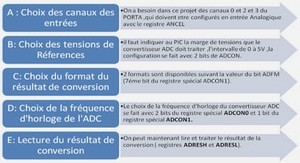Frontal impact accidents
The road deaths in the European Union in 2001 were of 55 000. The EU 1 set a target to reduce road fatalities by 50 % by 2010 compared to 2001 levels. Road mortality have been cut by 43 % in the EU leading to 32 000 deaths for the year 2010 according to ETSC 2 (ETSC 2015). This is equivalent to 102 000 less deaths in the EU during this period. In order to keep improving road safety, the commitment has been renewed for 2020 compared to 2010 levels, that is the objective is to have no more than 16 000 road deaths across the EU in 2020. Figure 1.1 shows the results of this policy for the years 2000 to 2014 along with the projection for 2020. This reduction is estimated to saving 182 billion Euro as societal cost. One can also note that the deaths reduction took place despite a constant growth of road traffic as seen on Figure 1.2 according to ETSC 2003. Figure 1.2a presents the fatality rate that is the number of deaths divided by the number of kilometres driven by motor vehicles (in billions) each year in the EU. Figure 1.2b shows the road traffic estimated by the number of kilometres driven by motor vehicles each year in the EU. Reducing the number of road deaths involves improving many factors such as public policies, regulations, infrastructures and crash performance of vehicles. In order to investigate deeper how to protect the occupants of a vehicle in case of a crash, the occurrence and severity of injuries in case of a crash needs to be considered.
Accidentology
Epidemiological studies analyse car accident databases in order to understand what are the main injury causes to the occupants and to analyse their frequency and severity. Klinich et al. 2010 reported that there is 1.5 times more injuries in frontal impact than in side impact. Rudd et al. 2009 reported that 43 % of occupant fatalities appeared in frontal crashes, making it the impact case creating the more fatalities. Regarding the abdomen, Elhagediab and Rouhana 1998 demonstrated that the proportion of injuries to the abdomen increases with the injury severity (Table 1.1). This shows that approximately 20 % of the critical injuries are abdominal injuries. Lee and Yang 2002 made similar observations, the abdomen representing the 7th body region in terms of total injuries but the 3rd when looking at the proportion of severe injuries per body region (AIS 3 3 and more). Yaguchi et al. 2011 also mentioned the abdomen as the 3rd body region in terms of fatalities after the thorax and the head and the 1st by fatality rate (fatalities divided by the sum of all injuries). This puts the abdomen as one of the important body regions to be protected, along with the chest and the head. Martin et al. 2010 described that rear occupants are 1.9 times as likely to sustain abdomen injuries than drivers and 1.5 time than front passengers. Couturier et al. 2007 also stated that rear occupants face a 2.5 time more important abdomen injury risk than front occupants. In each of the two studies, abdomen is the body region that shows the most difference between front and rear occupants for injury risk. There is therefore a benefit for reducing the inequality between car occupants to improve abdomen protection. This has also been highlighted by Frampton et al. 2012, rear occupants sustaining more abdominal injuries (Figure 1.3a) to most of the organs (Figure 1.3b)
Regulation on car passengers protection
In order to be allowed on the market, each car should pass a various number of safety regulations. The two main regulations that are influencing dummy development are the European and the United States regulations. In Europe, UNECE 4 regulations are applicable and regarding frontal impact, UNECE R 94 is used. Until 1998 Global Agreement, the United States were not part of UNECE and followed their own standards. For frontal impact FMVSS 5 208 is applicable for all passenger cars sold in the United States. In order to assess occupant protection during car crashes, these regulations perform impact tests with crash test dummies representing the car occupants. Injury criteria are defined in order to link the measurements performed by the dummies to occupant injury risk in the real world. However no injury criteria for the abdomen exists for the moment in regulations. Thorax injury criteria will be presented here as examples. The frontal impact regulation in Europe consists in a a vehicle impacting a fixed deformable barrier (1 m width and 65 cm height placed 20 cm above the ground) at a 56 km h−1 speed with 40 % of the vehicle width overlap on the driver side. Two Hybrid iii dummies seating in the front seats are used (UNECE R 94, see UNECE 2013). The chest deflection and (V · C)max are used for the thorax. The chest deflection should be less than 50 mm and (V · C)max should not exceed 1 m s−1 . (V · C)max is computed as the maximum value of the product of compression and rate of chest deflection multiplied by 1.3 (scaling factor). The compression is the deflection divided by the sternum depth of 229 mm. The United States regulation for frontal impact differs from the European regulation. The test consists in the vehicle impacting with full width a rigid barrier at 48 km h−1 (FMVSS 208, see NHTSA 2011). Two Hybrid iii dummies are seated in the front seats. For the thorax the resultant acceleration should not exceed 60 g’s and the chest deflection should not exceed 63 mm. The United States regulation also has a test for the 5th percentile female Hybrid iii dummy that is similar to the test case of the European regulation but with a velocity of 40 km h−1 .
NCAP and Euro NCAP assessment
The NCAP 6 was created by NHTSA in 1978 for cars on the United States market. NCAP goal is to keep on improving the safety of cars by giving rating to each car in the market. The frontal impact test protocol consists in the same test condition as the US 7 regulation with an increased speed of 56 km h−1 (NHTSA 2012). It uses the Hybrid iii dummy in the driver position and 5th percentile female Hybrid iii as passenger and the same injury criteria as the regulation are used with the same tolerance levels. Euro NCAP 8 is an independent body created in 1997 (Hobbs and McDonough 1998) and backed by the European Commission, European Governments and motoring and consumers organisations. Euro NCAP has more stringent test conditions than the regulation and gives points to assess how good the protection of a body region is. When more than one injury criterion exist, the weakest performance is considered for points attribution. If the value of a criterion is below the higher performance limit, 4 points are given for the body region protection. If the value is above the lower performance limit, 0 points are given. If the value is in between, a linear interpolation is performed to calculate the number of points. Then a score is given to the body region according to Table 1.2. The Euro NCAP frontal impact tests has the same protocol than the European regulation tests, the impact velocity being higher at 64 km h−1 (Euro NCAP 2015d). Since 2015, a new test close to the US regulation has also been added with an impact speed of 50 km h−1 (Euro NCAP 2015c) with 5th percentile female Hybrid iii dummies. This tests includes the assessment of submarining and decreases the car score in case of submarining. Submarining is assessed for driver and rear passenger by a 1 kN drop in any of the two iliac forces within 1 ms and video confirmation. Figure 1.4 shows the principle of the two tests. Table 1.3 shows the values of the (V · C)max criteria and chest deflection taken from Euro NCAP 2015b.



